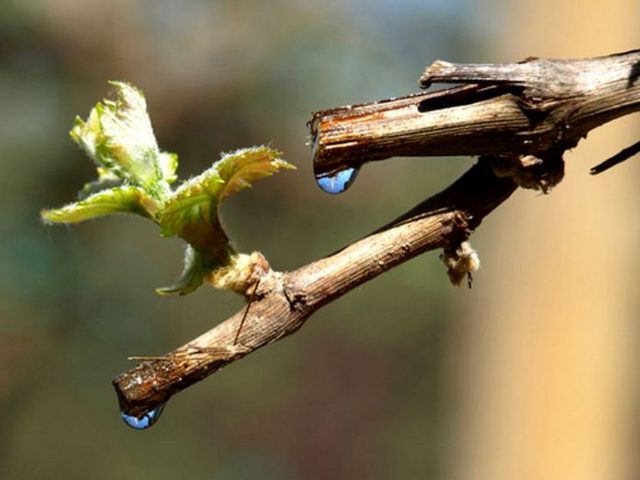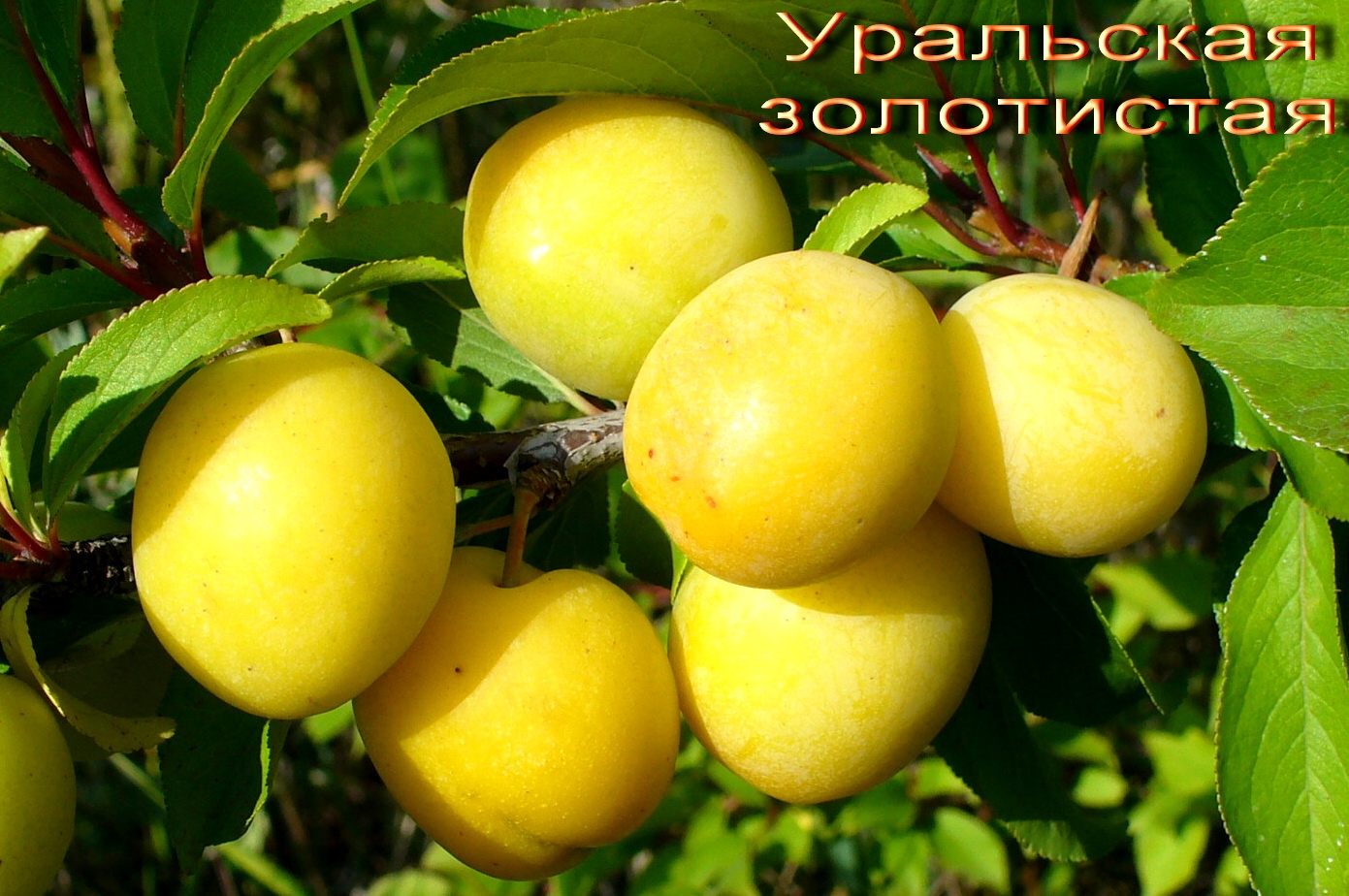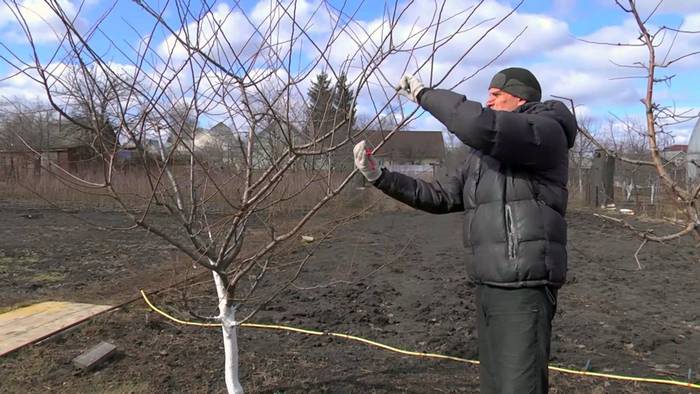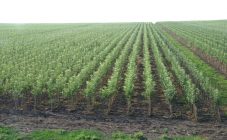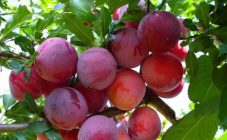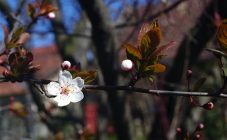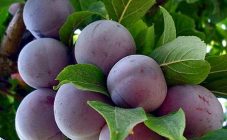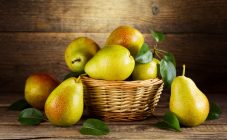Content:
Plum is a fairly thermophilic plant that habitually grows in areas with warm or temperate climates. Russia has a lot of similar territories, but there are also many areas where the cultivation of any horticultural crops is fraught with some difficulties. However, thanks to the successes of modern scientists-breeders, today the plum is growing in the Urals. These are special varieties with increased winter hardiness.
Difficulties of growing plums in the Urals
Ural gardeners have to limit their choice of crops for the garden and rely only on cold-resistant plants. The problem of northern gardening is not limited only to the meager selection of varietal seedlings. The fact is that Siberia, the Urals, Bashkiria have a sharply continental climate (summer can be hot, and winter is harsh, and temperature indicators change dramatically), in such conditions it is difficult to grow garden crops. A lot of trouble goes to gardeners when growing a seedling: from drying out the bark to freezing the tree. In order not to be left without a crop, you need to choose the best zoned varieties for the Urals.
Plum for the Urals - the best varieties
Not all types of plums are suitable for growing in cold regions. There are not so many suitable species:
- cherry plum. The most famous is Pavlovskaya, which is distinguished not only by winter hardiness, but also by a good ability to recover after a hard winter; Almost all varieties of northern plums are bee-pollinated, and cherry plum species are usually self-fertile. Thus, when planting trees in your garden, you should take care of the presence of different pollinators. For Pavlovskaya cherry plum, it is preferable to have Pchelnikovskaya as pollinators.
- Ussuriyskaya - it is, among others, the most winter-hardy species derived from the Chinese. The tree is tall, with a well-branched crown. Withstands frost down to -55 degrees;
- Canadian plum is a type of North American. It has good winter hardiness, a long dormant period. Does not suffer from early frosts in spring, as they bloom much later than ordinary home plums. There are also high ones, up to 5 m, but most are still medium-sized, with a wide spreading crown;
- cherry and plum hybrids - the result of crossing the Chinese and American plums with Besseya or sand cherry;
- thorn.
The most popular varieties of the Ussuri plum include the following:
- Ural dawns;
- Pioneer;
- Modest;
- Vesta;
- Chemal;
- Manchurian beauty;
- Blue Chemalsuyu (this variety tolerates super cold well);
- early Khabarovsk;
- Chemal's gift;
- Arkhangelsk Jubilee.
The varieties of the Canadian type include:
- Ural Hungarian;
- Seligran variety;
- plum Pearl of the Urals;
- Steppe;
- Ruddy;
- plum varieties Krasnoselskaya;
- Kulundinskaya.
It is these types that are the most cold-resistant.
If we form the TOP-10 varieties, created on the basis of the most winter-hardy species (Ussuriysk and Canadian), then we get the following list of the best varieties:
- Covenant.
- Pioneer.
- Commonwealth.
- Hungarian Ural.
- Seligran.
- Decent.
- Ural dawns.
- Vega, Flamingo.
- Selenite.
- Neiva.
Now, in detail about how to choose a variety and how one or another plum for the Urals differs in taste and other characteristics.
Among the recently bred, but already popular, the following varieties can be distinguished:
- Plum varieties Chebarkulskaya - compact, its height is no more than 3 meters, the diameter of the crown is the same. Plum Chebarkulskaya sweet, rather large, perfectly tolerates the winter, freezes and dries up a little, and is resistant to diseases.
- Pearl of the Urals (bred in 2005) - medium early, high-yielding, has a good taste and high yields.
Among the most productive varieties, the following can be noted:
- Plum Pride of the Urals is a very productive variety. Plum Pride of the Urals is similar in description to the Shershnevskaya variety, from which it was bred. Productivity of the variety - 15 kg of fruit can be harvested from a three-meter tree. The crown is not thickened, it does not lend itself well to damping and freezing.
- Ural prunes are also among the most productive varieties among northern plums and are winter hardy. It is slightly smaller than usual plums, rather sweet, while having a higher density and low fruit juiciness. Pronounced plum taste slightly tart, but pleasant.
If we compare plums of northern varieties by color, then we can distinguish the following:
- Plum Snow White. Description of the variety: the tree attracts attention even with its name. Snow White belongs to mid-season plum varieties. The fruit is covered with a light, waxy bloom. The tree can withstand frost down to -40 degrees. It responds to care with a bountiful harvest of tasty aromatic fruits.
- Uralskaya golden plum is also a mid-season variety. Fruits differ in that they have a golden and yellow hue. The tree bears fruit consistently and annually, producing yellow firm fruits. They go well both for fresh food and for canning;
- Sverdlovskaya red plum resembles red Ural plum according to the description of its appearance.
- plum of the Uralskaya red variety is quite fruitful. The fruits are bright red.
Basic principles of agricultural technology
You should not buy northern varieties of plums from random sellers - only in the nursery. This will help avoid mistakes and will not allow you to purchase a tree that is not zoned to the Ural region. It is better to take a tree two to three years old, which has a well-developed root system.
In order for the tree to take root well and bear fruit, the planting must be thought out. First you need to find a suitable place: a slope in the southwestern part of the garden plot or in its southern side. It is worth avoiding places where water often stagnates - if the water is close or the water is located, the roots of the tree will begin to freeze and rot.
A tree is planted in a planting hole, which is dug about 0.7 by 0.8 m in size, mixing the fertile layer of earth with compost, ash and superphosphate. Northern varieties are not planted in autumn, only in spring.
A small peg should be placed next to the seedling so that the young plant has a support. The planted tree is watered abundantly at the rate of one or two buckets of water per plant. After watering, the trunk circle must be well mulched. In the process of growth, the plant is watered carefully so that excessive moisture does not lead the root system to lock and damp, and also not to provoke excessive growth of shoots. Usually it is watered abundantly only in spring and early summer, then at the time of fruit ripening, while the ground is mulched every time. But in August, watering should be stopped.
During the growth and formation of fruits, the seedling feeds on nutrients extracted from the soil. He needs to be helped by timely fertilizing. Care consists in proper feeding with organic matter (rotted manure), potassium salt and superphosphate. Ammonium nitrate is also introduced in the spring.
Timely pruning will not allow the crown of the tree to thicken. Sanitary pruning is done to cut out old or damaged branches after winter. The beautiful appearance of the crown is achieved by formative pruning. Finally, there is rejuvenating pruning - it is needed for trees over five years old.
The peculiarity of preparing for winter in cold areas is such that the tree is often tilted to the ground in order to protect it from wind and temperature changes. In this case, it is cut in a specific way, tilted and the shoots are pinned to the ground. Then they cover it with snow. But this can not be done with all species. Usually, for the safety of the plant, the boles are covered with whitewash for the winter, covered with spruce branches.
Preventing the emergence of diseases and the appearance of pests in the garden culture is another concern of the gardener. Plum can suffer from sawfly and aphids. You should constantly inspect, destroy pests. Bordeaux liquid helps well in the fight against them. There are many popular ways to protect plants from garden pests and diseases.
Thus, even for unfavorable regions, including Siberia and the Urals, there is the possibility of growing high-grade and fruitful varieties. Of course, agricultural technology here will be a little more complicated than in the southern regions, however, for diligence and care, the plum will reward a hundredfold with a bountiful and tasty harvest.
